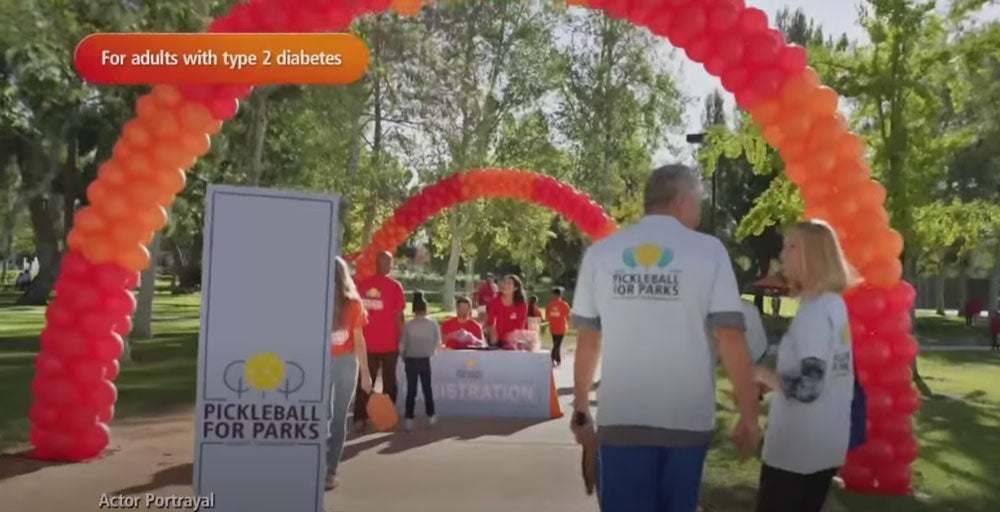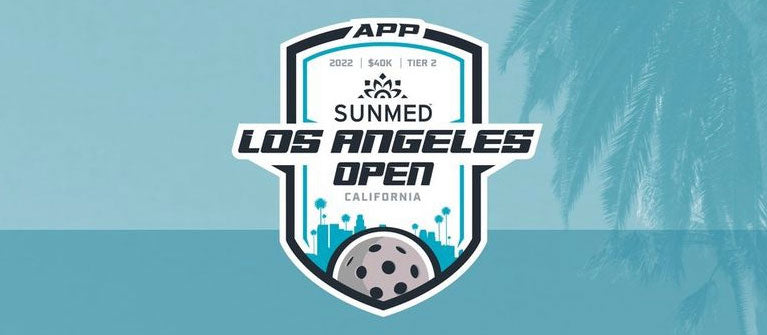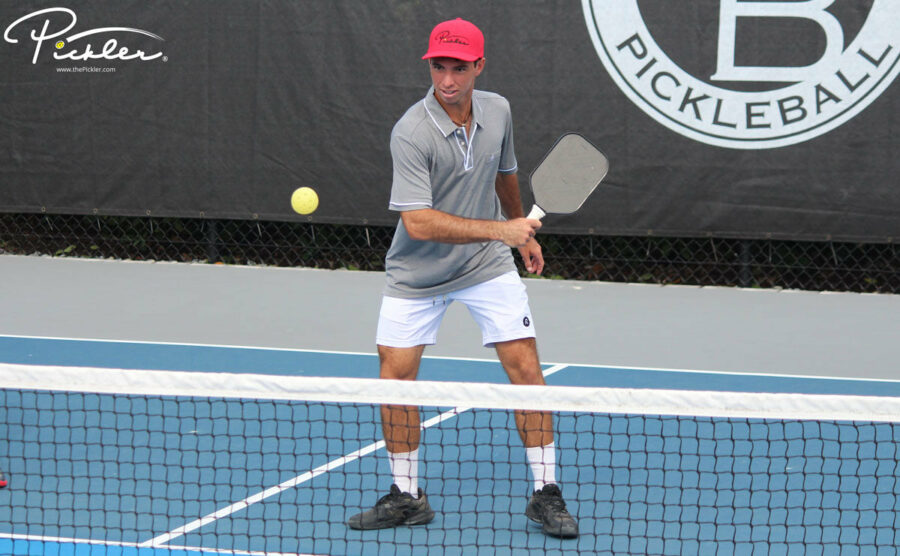You’ve probably seen that TV ad for the Type 2 diabetes drug that features pickleball. Or something that is supposed to pass for pickleball.
If you haven’t seen it, your television set may be broken. Because when it comes to TV ads that don’t involve emus, there’s nothing more ubiquitous these days than the pickleball-themed ad for Ozempic, a medication for diabetics looking to control their blood-sugar levels.
Turn on your set, and within minutes you’ll see a woman who is running an imaginary pickleball tournament. In the ad, she takes time out from piling red and orange pickleballs into a large vertical tube that is supposed to be a donation thermometer to stroll through pickleball courts with games in progress as she talks to the camera.
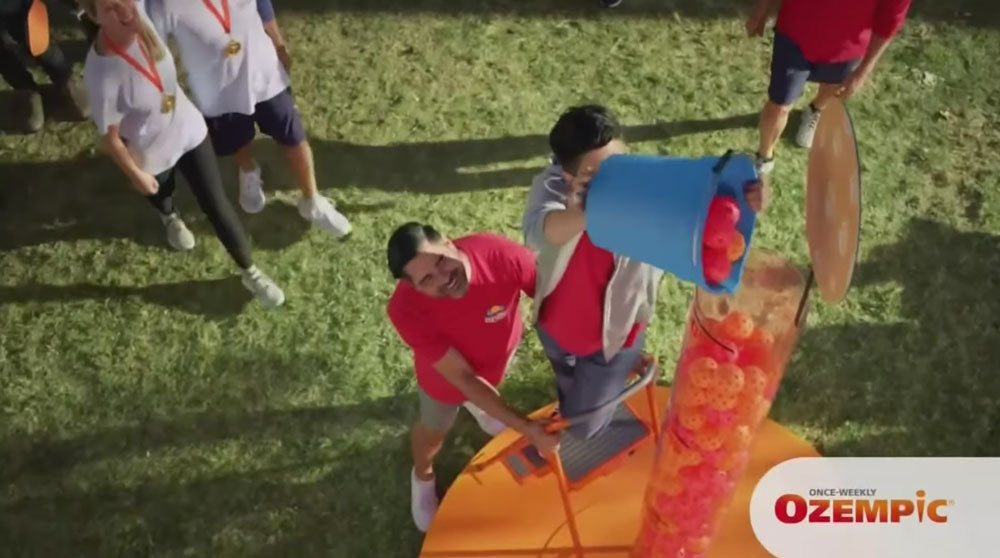
This apparently doesn’t stop play or bother any of the pickleball players – a situation that strains credulity – as she talks about “lowering my A1C” and getting “back to the game.”
The “game,” I guess, is supposed to be pickleball. But it probably doesn’t look anything like the pickleball we know and love.
In the ad, the court action depicts docile people hitting gentle rainbow-arcing balls to each other and then gathering across the net after a game to exchange handshakes.
Yes, handshakes. Not paddle taps.
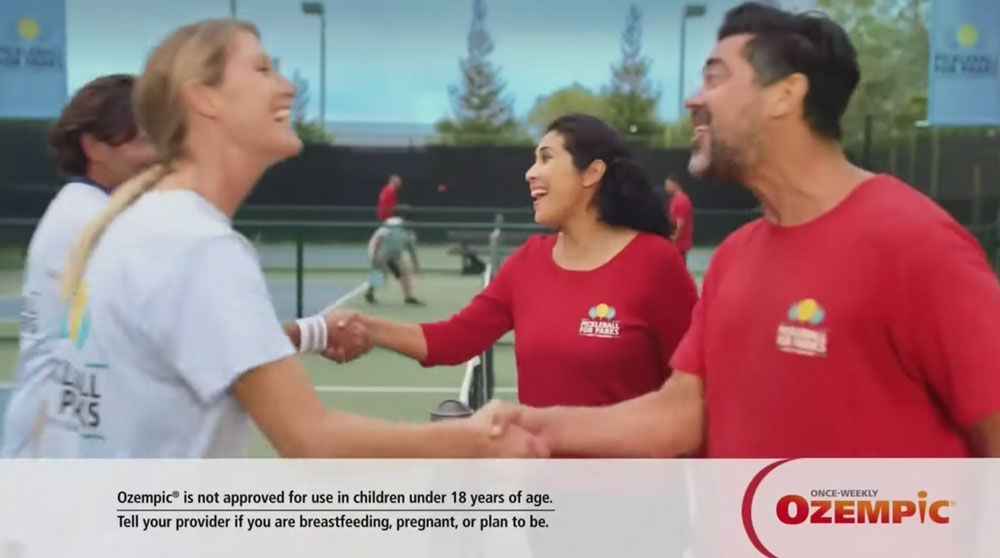
It’s as if they were formalizing the sale of a used car or the successful conclusion of a peace accord.
By the end of this ad, it’s abundantly clear that the actors who got the parts must have agreed to a contract clause that reads “you must have no experience playing pickleball.”
I never thought I’d ever say this, but I’d rather see that talking gecko, or Flo from Progressive, than being subjected to more reminders of the pickleball abuse contained in this Ozempic ad.
For starters, it’s just going to give would-be new pickleballers the wrong idea.
Linking pickleball to a life-style triggered illness that is particularly hard on the couch-potato cohort plays into a stereotype that pickleball is only suitable for those on the doorstep of motorized scooters.
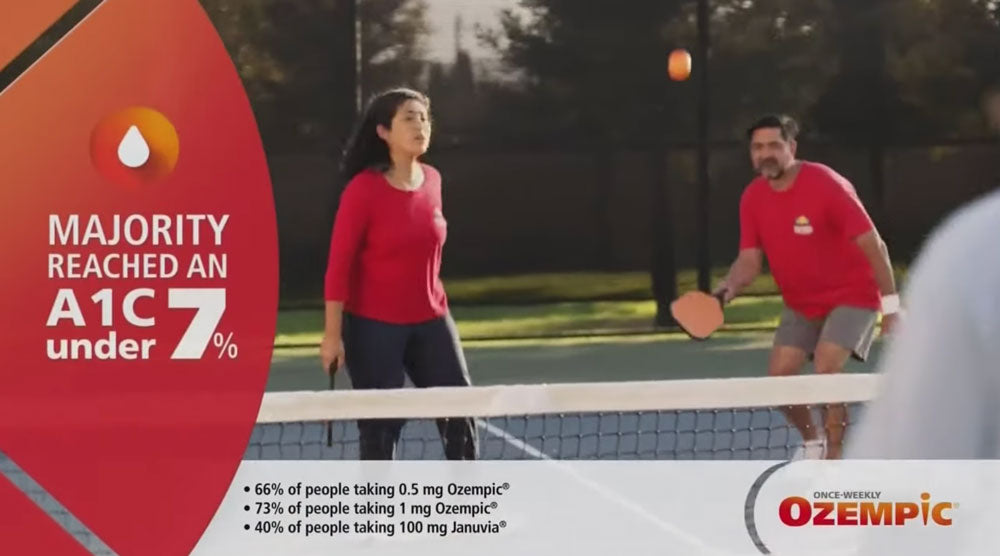
Sure, I know you can make the argument that people with Type-2 diabetes and pickleball players both have vested interests in staying out of the kitchen. But pickleball doesn’t fit the older-aged disease linkage that’s implicit in this TV ad.
While pickleball first bloomed in retirement communities, it is increasingly becoming a sport played by younger people.
One of the top players in the pro circuit is a 14-year-old girl.
And if you go to an open-play public court these days, you’re as likely to see as many teenagers and young adults playing as you are their parents.
The 2020 Pickleball Participation Report compiled by the Sports and Fitness Industry Association put the average age of pickleball players at 38 years old – which is seven years younger than the age when Type-2 diabetes becomes a possible concern.
So, it’s a sloppily conceived ad: One that’s based on an out-of-date impression. And it could have been so easy to fix.
After all, it’s not like there’s no money involved in the pharmaceutical industry. Novo Nordisk, the company that makes Ozempic, made more than $5 billion in operating profits last year.
That’s certainly enough money to spare a few crumbs on a pickleball consultant. So, yes, you’ve probably already figured out where this rant is heading:
I am offering my services.
If you want to make your Ozempic ad more palatable for the millions of pickleball players like me who are doomed to watch it over and over again, here are five quick fixes you could adopt in a re-shoot of the ad.
- Hire a banger
There are no bangers among the pickleball players in this ad. Everyone seems way too content to hit soft pop-ups across the net.
That’s just not believable. You need at least one guy wearing a backwards ballcap standing on the baseline and walloping balls into the fence on the other side of the court or at the torso of the closest person across the net.
- Add a serving dispute subplot
People watching this ad might get the wrong idea that scores of people can gather to play pickleball without somebody questioning tournament officials about the legality of another player’s serve.
The ad should show a game stopped while a referee is asked to sort out whether a player’s serve is more sidearmed than underhanded. Perhaps, a navel measurement could be incorporated into this scene.
- Where’s Tyson?
Hire pro pickleball Tyson McGuffin to be one of the players in the ad. McGuffin wouldn’t only bring a measure of vim and vigor to the ad. He’d also bring in the arm-sleeve tattoo element that is missing in the Ozempic ad.
Even better, you can photoshop McGuffin’s tattooed arm so it reads some kind of appropriate message for a diabetes ad.
Something like, “AARP: Movie Discounts 4 Life”
- Incorporate score amnesia
As the narrator walks by the courts, have one group of players pausing their game to disagree on who is serving and what the score is.
A side benefit of doing this is that maybe you can get Prevagen, the memory loss drug, to co-sponsor the ad.
- Hire extras as vendors
It’s not believable that a big group of pickleballers will gather without a vendor’s row of tables on the periphery of the courts selling clothing with dink-related puns, vibrating massagers, and pickleball vacation deals.
I’ve got other ideas to make the Ozempic ad more believable. But like I said, the company makes way too much money to be a charity case. So, I’ll need a substantial down-payment before I continue to provide the help that is so desperately needed.
If I don’t pick up the phone at first, keep trying. I’m probably on the pickleball court.

Frank Cerabino is a long-time columnist for the Palm Beach Post in Florida, a pickleball addict like the rest of us, and a newly published author. Check out Frank’s newly released book, I Dink, Therefore I Am: Coming to Grips with My Pickleball Addiction (available on Amazon and a great read (or gift!) for any pickleball player), for pickleball tips and laughs!

